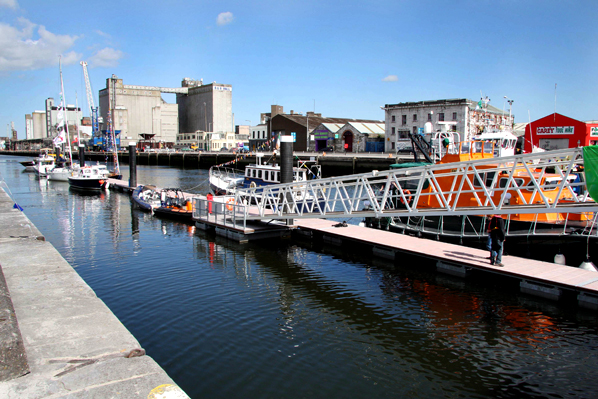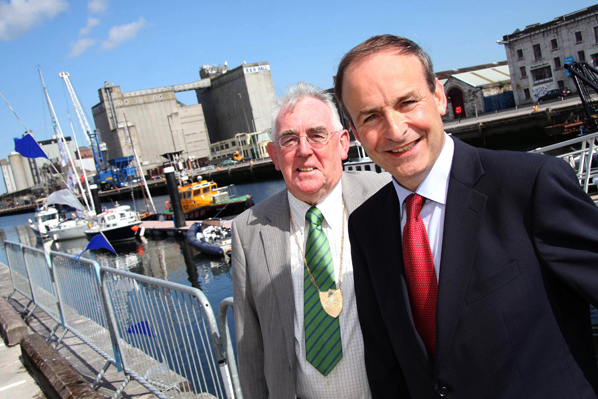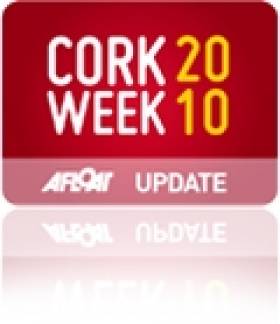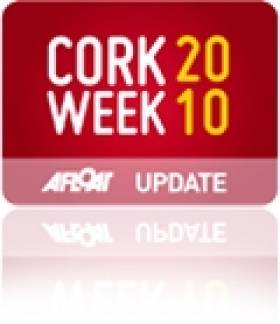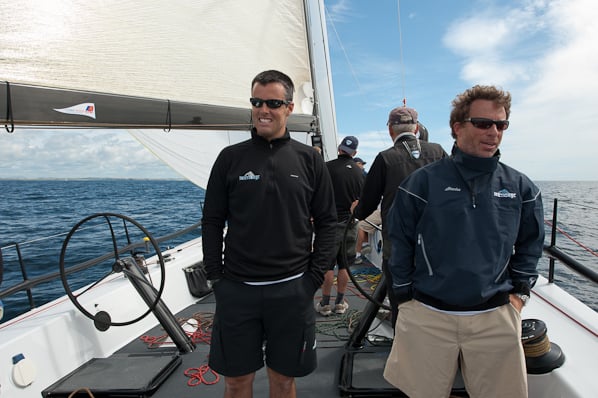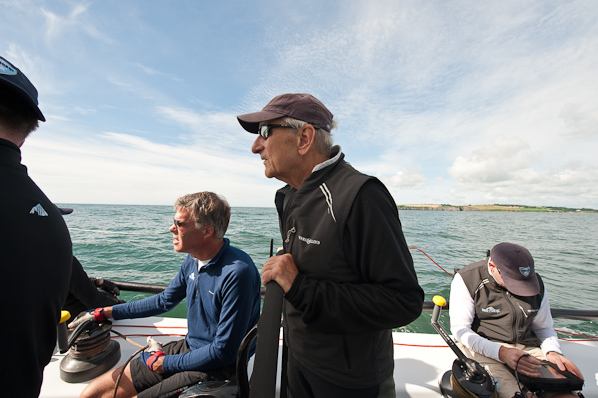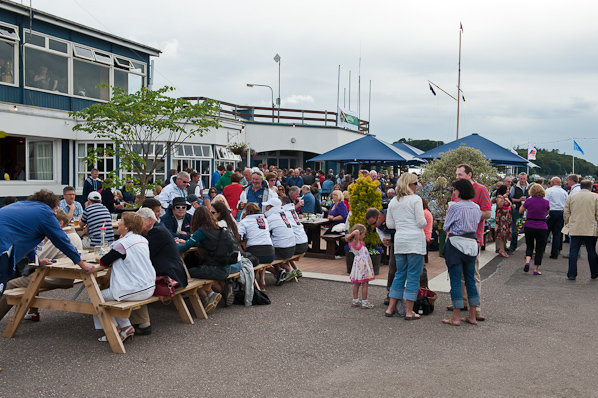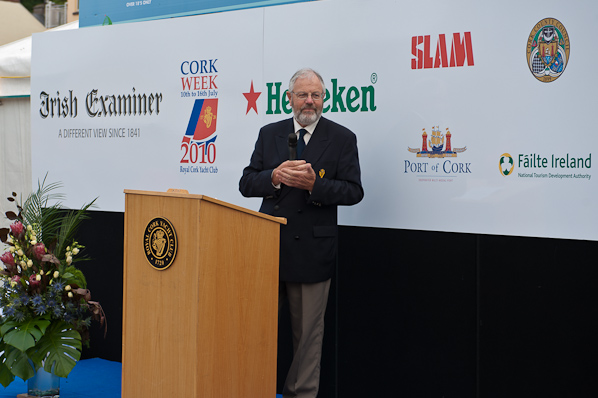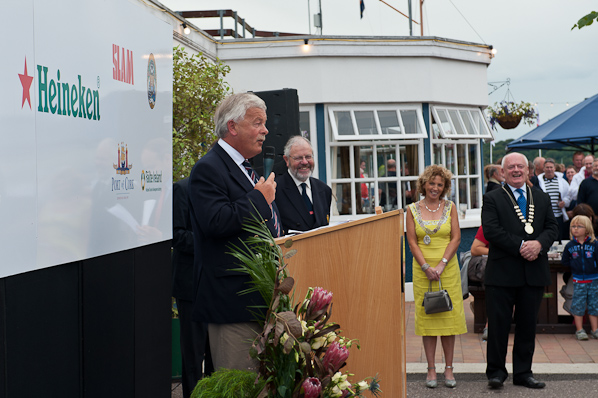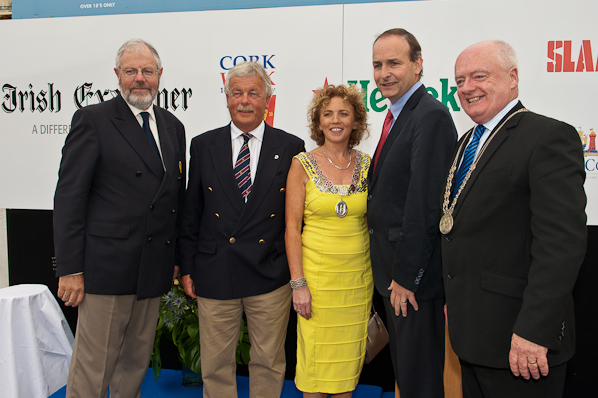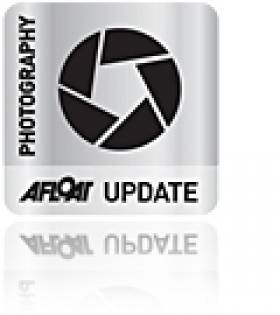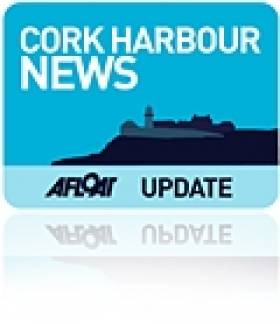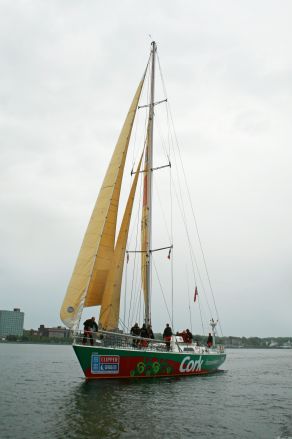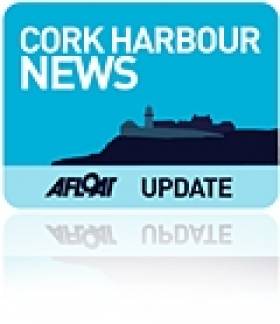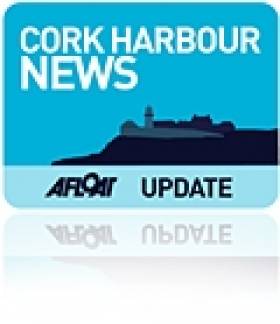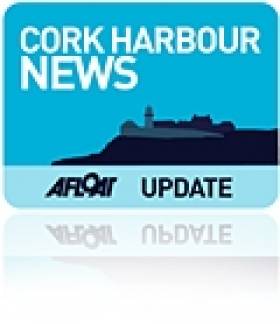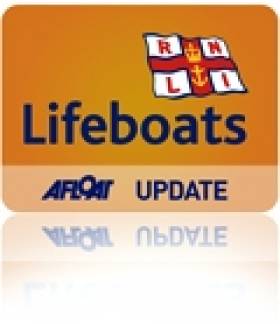Report plus Photos! There are plenty of strong home sailing performances from the first day of Cork week today and Irish boats are in control in IRC Zero, the J109s, IRC three and IRC divisions four, five and six. Its a great start to what the official press release is calling 'Costa del Cork' but locals know Cork Harbour is far better than that place. Cork week 2010 opened in spectacular sunshine this afternoon; an entirely appropriate antidote to the doom and gloom of recent months. Moderate breeze of 10-15 knots from the southeast, gave competitors a day to remember and there were many happy sailors returning to the dock this afternoon. Louay Habib joined them on the water and reports here class by class. Afloat Photographer Bob Bateman was on the water and in the air. His shots are below and his photo gallery of day one is here.
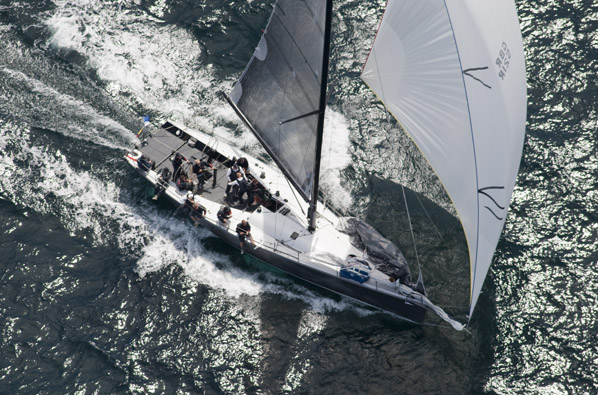
IRC Zero
Race Two for super zero was subject to a decision by the jury today but Super zero was still a clash of the titans on the Slalom course today and it was exciting stuff as Paprec Recyclage tactician, Sebastien Destremau explains: "We were happy with our boat speed and performance in Race one but it was pretty difficult out there, these boats are really powerful and the corners come up a bit too fast. The boats were really close together in Race Two. However the boats in the other classes which were on the same race course were not a problem as far as I am concerned."
Johnny Vincent's TP52, Pace came back in a light airs second race to win by a tight margin from Gray and Laidlaw's Farr 52, Bob with Paprec Recyclage in third. After two races the big boat class is led by Pace, Paprec Recyclage is second with Bob in third place.
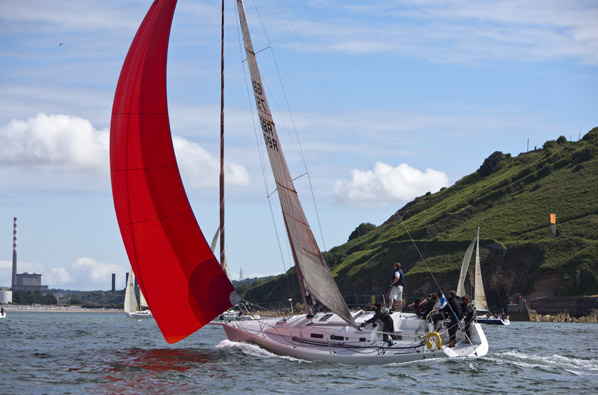
J/109 European Championships
Eighteen J 109s are competing at Cork Week for the European Championship and they enjoyed some fantastic racing today. Robert O'Leary, steering Jeroboam, got a cracking start, right under Weavers Point, they went on to win the race by over two minutes. Steven Tapper's Stalker was second and Jonathan & Andrea Tithecott's Judgment Day taking third.
Jeroboam is owned by Jim Prower from Britain but is crewed by students mainly from University College Cork, including Robert O'Leary, who is just eighteen years of age, in his first year at the University.
"We started right under Weavers point to get out of the adverse tide and got a bit of help from the surf down the shore. After that, getting under Carlisle Fort was the way to go, again due to the tide." explained Robert O'Leary.
Jeroboam led from the start and in clear air they were pulling away from the rest of the fleet, after a cracking first two legs, Jeroboam led the fleet out of the Harbour to Ringabella Bay and then headed offshore. Jeroboam were leading the fleet but only by about 30 seconds.
"The further offshore we went the more the wind started to go east and we got our lay-line spot on, we had a good run back but didn't pull away from the pack. We were still vulnerable but we have some great local knowledge and once we got into the harbour for the second time we felt that this would pay. We also managed to slow the opposition down by some good boat on boat work; after we rounded Cobh Mark, we hoisted our spinnaker and gybed immediately on to starboard, several boats behind us had to give way. With a comfortable lead, we could then sail more conservatively."

IRC Zero
Anthony O'Leary's Ker 39 had a solid start to the series and is the overnight leader. Class Zero has some exceptionally close racing and Antix tied with Kieran Twomey's Corby 38, Gloves Off on corrected time in Race Two. A second on their first race puts the Irish Rolex Commodores' Cup captain in pole position. Bernard Lambilliotte's Swan 45, Nemo of Cowes is second, finishing the day on a high note by taking Race Two. Gloves Off is third by just half of one point. It was a mixed day for Richard Matthews and his crew on Oystercatcher XXVI. The Humphreys 42 will have fancied their chances on the slalom course and took the gun in race one by a country mile but where over the line in Race Two and had to go back and take a 20% penalty, meaning that they drop out of the top three, at the end of the first day.
IRC One
It couldn't be closer, in IRC One. After two races, there is nothing to separate the top three boats. Richard Fildes, Corby 37, Impetuous, Conor Phelan's Ker 37, Jump Juice and Robert Davies, Corby 36, Roxy 6 are all tied on four points. Jump Juice had a cracking first race taking line honours and a win on corrected time by some margin. Roxy 6 will be representing Ireland in the forthcoming Rolex Commodores' Cup and Jump Juice and Impetuous are past entries. IRC One looks like it will be an intense battle.
IRC Two
Nineteen boats were jostling for position at Weavers Point in IRC Two. It was a fast reaching start and too many were over eager, causing Race Officer, David O'Brien, to send them back for a General Recall. The fleet got away second time and Wouter Borghijs A 35, Tontin powered into the lead, after hoisting a Code Zero and accelerating off at pace. Tontin looked to have an unassailable lead but it was Sailing Logic's Reflex 38, Visit Malta Puma that took the spoils, as skipper Tim Thubron explains:
"We have the highest handicap for the class and before the race, we thought that the Harbour Course may prove difficult for us, as it is difficult to get away from the other boats. However, I thought that the crew work today was excellent, especially for a team that has only be sailing together for a few days. The Harbour Course is a tricky place to sail and we paid careful attention to the chart and the depth.
Winning today, exceeded are expectations and so did the weather! We started in full oilskins but were soon peeling them off and enjoying some brilliant sailing. We are really looking forward to having a few beers and some food at the welcome party tonight."
Visit Malta Puma are the overnight leader in Class Three, just ahead of two Corby 33s. Barry Cunningham's Contango and Paul O'Higgins' Rockabill V.
IRC Three
Previous Cork Week Class winner, J 35, Bengal Magic had great day at the office winning both of today's races but Ross McDonald's X 332, Equinox is putting the pressure on with two second place results. Dermot Cronin's J 35, Mumbo is third. The 22 boat strong fleet enjoyed some spectacular conditions on the Trapezoid course, 3 miles offshore of Roches Point.
IRC Four
Patrick Kirwan's Sigma 38, Errislannan leads both the class and the Sigma European Championships with a first and a second in two races. Conor Ronan's Corby 26, Ruthless recovered from a fifth in Race One to win the last race of the day, to claim second place, overnight. Royal Cork's Alpaca owned by Paul & Deirdre Tingle had a consistent day and are third.
IRC Five
Vincent O'Shea's Corby 25, YANKS $ FFRANCS won both of today's races. Sistership, Thunderbird owned by Denis Coleman had a consistent day and are third with John Allen's X 302, Antix third. Ronan Lyden's Corby 25, Aurora looked to be going well with a second in the first race but placed 11th in the second to drop down the leader board.
IRC Six
Quarter Tonner, Tiger entered by the Kenefick's and James O'Brian did battle with Flor O'Driscoll's J 24, Hard on Port today. On the highly tactical, Windward Leeward Course. For the moment, Tiger are in front but Race One was the closest race of the day, in any class. Tiger taking the bullet by just 11 seconds, on corrected time. Paul Murray's Impala, Prometheus had a very consistent day and lies third.
Mixed Sportsboat & SB3s
The Welsh will be singing tonight but joined no doubt by the Irish. After two races there is nothing separating Michael Wilson's Welsh 1720, Yknot and Bryan Hassett's Irish 1720, Darkside. Malcolm Thorpe's 1720, King Louie is not far behind in third.
Ben Duncan and Brian Moran's SB3, Sharkbait were to strong for the fleet today, posting two bullets by a comfortable margin. Ronan Downing's Profile Park and Trevor D'Arcy's Bullet were second and third respectively. They will be hoping to get the better of Sharkbait on the Trapezoid Course tomorrow.
White Sail
Philip Dilworth's Grand Soleil 40, Orna was unstoppable in White Sail One posting two bullets by a handsome margin on the Olympic course. Dan O'Neill's IMX 38, Xerxes had a good day, as did Kevin Lane's Dufour 40, Aisha who are tied for second place.
In White Sail Two, McCarthy, Clarke & McMullin's Half Tonner, Harmony and Tom McNeice's Sigma 33, Minx III are tied for first place. Billy Duane's Sunlight 30, Expression posted to podium finishes and is just behind the front runners in third.
Cork Week 2010 was officially opened last night by Micheál Martin, Irish Minister for Foreign Affairs, with the assistance of Paddy McGlade, Admiral of the Royal Cork Yacht Club and Peter Deasy. Cork Week Event Chairman. It was a light-hearted affair and extremely well received by a huge gathering of competitors and event staff alike. Tonight Cork Week will throw a competitors' welcoming party with complimentary food and drink for all. After today's spectacular weather and champagne sailing, there looks like there could be more of the same tomorrow with perhaps more breeze in the late afternoon.
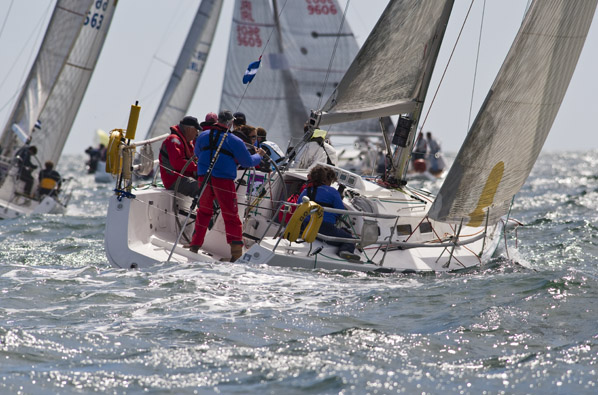

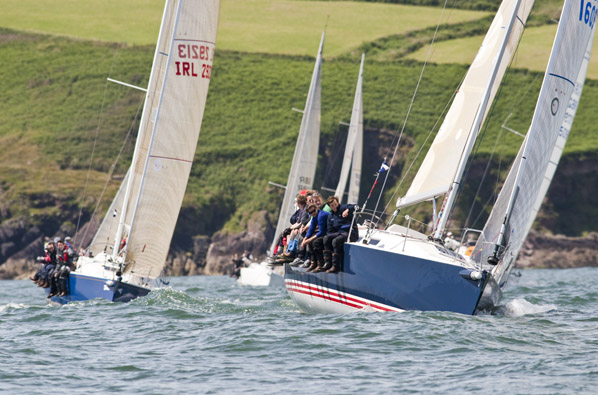
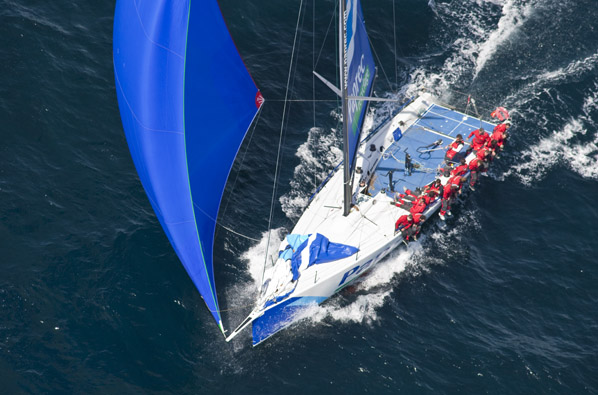

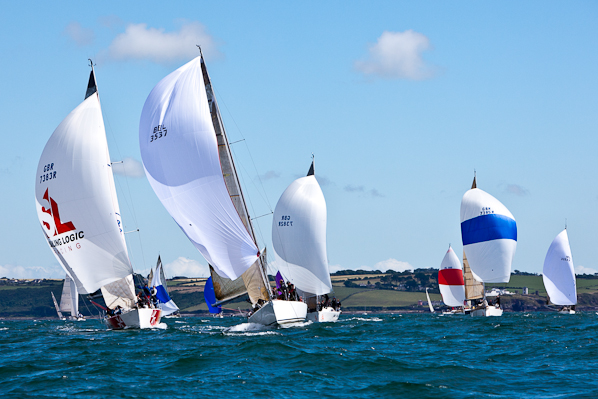


Full results HERE. More Photos HERE Afloat Cork Podcast HERE

